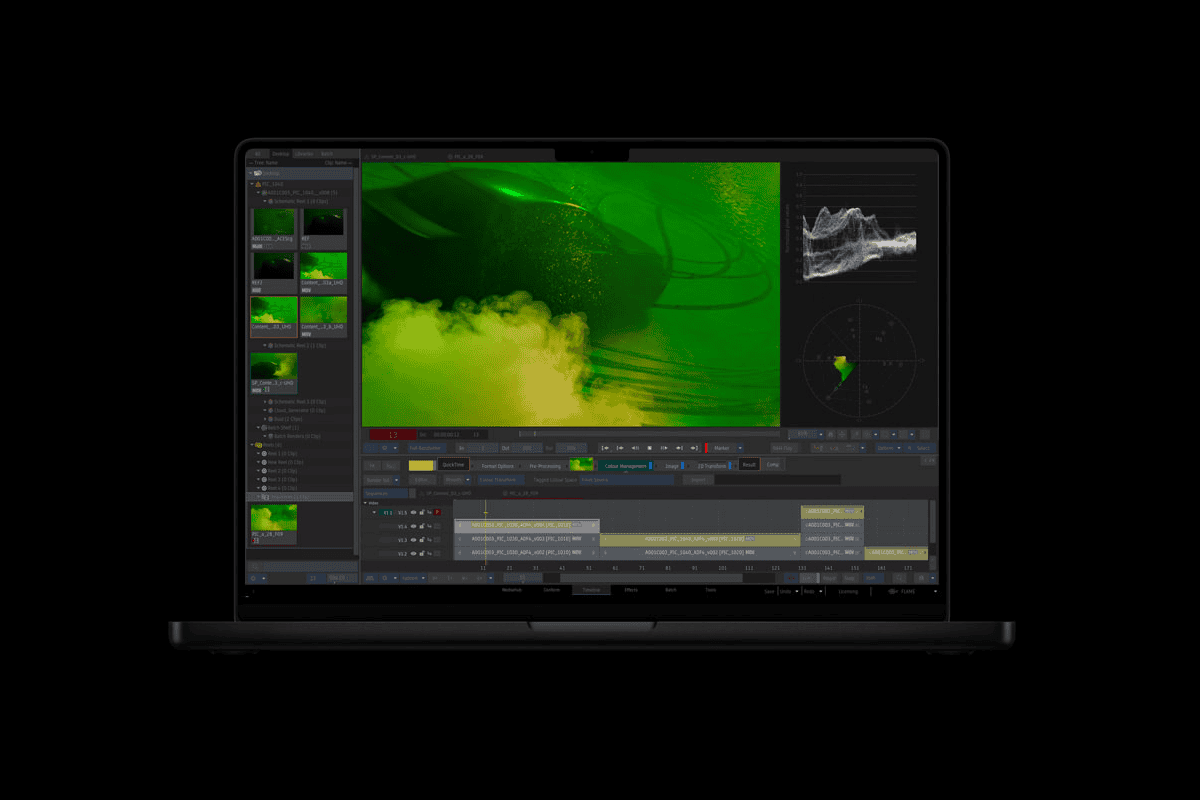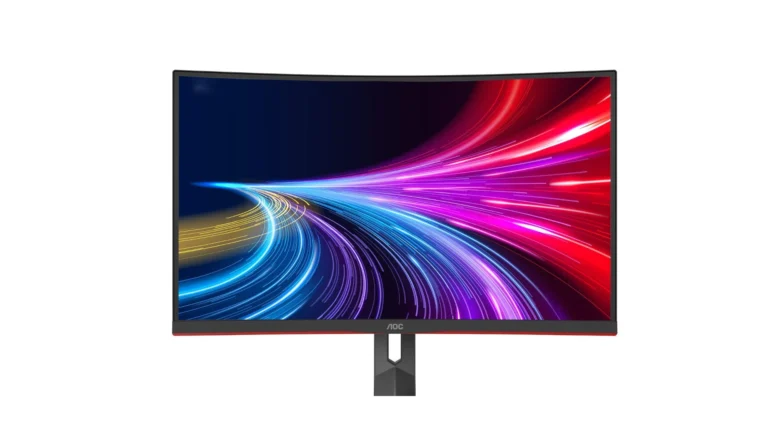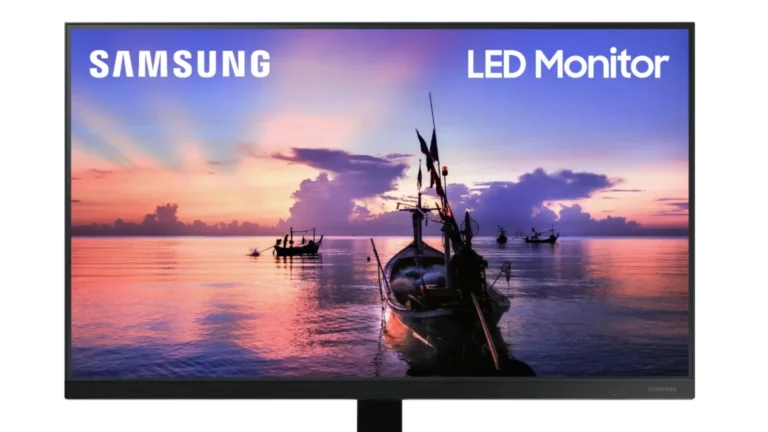
Quantum dot displays represent a significant leap in screen technology. These displays use tiny semiconductor particles called quantum dots to enhance color and brightness. Quantum dot displays produce more vibrant and accurate colors than traditional LCD screens.
The quantum dots, measuring only 2 to 10 nanometers, are placed on a film between the screen and backlight. When illuminated, they emit light of specific colors, resulting in improved color gamut and luminance. This technology is commonly found in QLED TVs, which are essentially LED-LCD TVs with an added quantum dot layer.
Quantum dot displays offer several advantages over other display technologies. They provide better energy efficiency, wider color range, and increased brightness compared to conventional LCDs. As the technology continues to evolve, quantum dot displays are becoming more prevalent in consumer electronics, offering users enhanced visual experiences.

Image Credit: Samsung
Quantum Dot Displays Explained
Quantum dot displays are becoming increasingly popular in TVs and monitors. They offer a significant improvement over traditional LCD displays in terms of color accuracy and brightness. But what exactly are quantum dots, and how do they work?
Tiny Crystals, Big Impact
Quantum dots are nanocrystals, tiny semiconductor particles just a few nanometers in size. These crystals have a unique property: when they absorb light, they re-emit it at a very specific wavelength, which determines the color of the light. The size of the quantum dot controls the wavelength, and therefore the color, of the emitted light. Smaller dots emit shorter wavelengths (bluer light), while larger dots emit longer wavelengths (redder light).
Enhancing LCDs with Quantum Dots
In a quantum dot display, a layer of quantum dots is added to the traditional LCD structure. This layer sits in front of the backlight, which is typically blue LEDs. When the blue light from the backlight passes through the quantum dot layer, the dots convert some of the blue light into very pure green and red light. This results in a wider color gamut and more accurate colors compared to standard LCDs.
Types of Quantum Dot Displays
There are two main types of quantum dot displays:
- QDEF (Quantum Dot Enhancement Film): A thin film containing quantum dots is placed on top of the backlight. This is a more affordable approach but may not offer the same level of color accuracy as QLED.
- QLED (Quantum Dot Light-Emitting Diode): In QLED displays, the quantum dots are the light source themselves, eliminating the need for a separate backlight. This technology is still under development but promises even better color performance and energy efficiency.
Advantages of Quantum Dot Displays
Quantum dot displays offer several advantages over traditional LCDs:
- Wider color gamut: They can display a broader range of colors, making images more vibrant and realistic.
- Improved color accuracy: The colors are more accurate and lifelike.
- Higher brightness: Quantum dots can convert light more efficiently, resulting in brighter images.
- Energy efficiency: They can be more energy-efficient than traditional LCDs.
Here’s a table summarizing the key features of quantum dot displays:
| Feature | Description |
|---|---|
| Quantum Dots | Nanocrystals that emit light at specific wavelengths |
| Color Gamut | Wider range of colors compared to LCD |
| Color Accuracy | More accurate and lifelike colors |
| Brightness | Higher brightness levels |
| Energy Efficiency | Can be more energy-efficient |
| Types | QDEF and QLED |
Key Takeaways
- Quantum dot displays use nanoparticles to produce purer colors and brighter images
- QLED TVs incorporate quantum dot technology to enhance LED-LCD performance
- Quantum dot displays offer improved color accuracy and energy efficiency compared to traditional LCDs
Fundamentals of Quantum Dot Technology
Have you seen TVs with vibrant, almost hyperreal colors? There’s a good chance you were looking at a quantum dot display. Quantum dots are revolutionizing how we experience color on screens, offering a significant step up from traditional LCD technology. This article will explain what quantum dots are, how they work within a display, and the benefits they offer in terms of color accuracy, brightness, and energy efficiency.
Quantum dot technology revolutionizes display screens with nanoparticles that enhance color and brightness. This innovation builds on existing LED technology to create more vibrant and efficient displays.
Quantum Dots: Composition and Function
Quantum dots are tiny semiconductor crystals measuring 2-10 nanometers in diameter. These nanoparticles emit light of specific wavelengths when excited by electricity or light. The size of a quantum dot determines the color it produces.
Manufacturers like Nanosys create quantum dots from materials such as cadmium selenide or indium phosphide. When added to displays, quantum dots improve color accuracy and expand the color gamut. This results in more lifelike images with richer, more saturated colors.
Quantum dots also boost display brightness. They convert blue light from LEDs into pure red and green light with high efficiency. This process increases overall luminance while reducing power consumption.
Evolution of Display Technologies
Traditional LCD displays use white backlights and color filters to produce images. This method limits color range and wastes energy. OLED technology improved on LCDs but faced challenges with brightness and longevity.
Quantum dot displays bridge the gap between LCDs and OLEDs. They maintain the brightness and durability of LCDs while rivaling the color performance of OLEDs. Early quantum dot TVs used a film containing the nanoparticles placed over blue LEDs.
Newer designs incorporate quantum dots directly into the LED chips. This approach, called QD-OLED, combines quantum dots with OLED technology. It offers the best features of both technologies: deep blacks, wide viewing angles, and brilliant colors.
Quantum Dot Displays Vs. Other Technologies
Quantum dot displays offer distinct advantages over traditional display technologies. They provide enhanced color accuracy, brightness, and energy efficiency compared to conventional options.
Comparing OLED and QLED
OLED and QLED represent two advanced display technologies. OLED uses organic compounds that emit light when electricity is applied. QLED, developed by Samsung, uses quantum dots to enhance LCD displays.
OLED excels in producing deep blacks and wide viewing angles. It can turn off individual pixels completely. QLED, however, offers superior brightness and color volume. QLED displays typically achieve higher peak brightness levels, making them ideal for well-lit rooms.
Samsung’s QLED TVs use a quantum dot layer to improve color performance of LCD panels. LG and Sony focus on OLED technology for their premium TV lines. Both technologies support HDR content, but QLED often delivers better HDR performance due to its higher brightness capabilities.
Improvements Over Traditional LCD TVs
Quantum dot displays significantly enhance traditional LCD technology. They improve color accuracy and expand the color gamut beyond what standard LCDs can achieve.
The quantum dot layer replaces conventional color filters, allowing for more efficient light transmission. This results in brighter images and more vivid colors. Quantum dot displays can produce nearly 100% of the DCI-P3 color space, a wider range than typical LCDs.
Energy efficiency is another key advantage. Quantum dots require less power to generate the same level of brightness as traditional LCDs. This leads to reduced energy consumption and potentially longer lifespan for the display.
TCL and other manufacturers have adopted quantum dot technology to enhance their LED TV offerings. These improvements make quantum dot displays competitive with high-end OLED models at often lower price points.
Quantum Dot Displays in the Context of HDR and Color Saturation
Quantum dot technology excels in supporting HDR content. The enhanced brightness and expanded color gamut of quantum dot displays allow for more impactful HDR presentation.
These displays can achieve higher peak brightness levels, crucial for HDR highlights. This capability enables them to render a wider range of luminance, from deep blacks to bright highlights, enhancing the overall contrast and perceived image quality.
Color saturation is another area where quantum dot displays shine. They can produce more saturated colors across a broader spectrum. This results in more lifelike and vibrant images, especially noticeable in nature scenes and vivid content.
The improved color performance of quantum dot displays also benefits standard dynamic range content. Even non-HDR material appears more colorful and engaging on these displays, offering viewers an enhanced visual experience across various content types.
Design and Manufacturing Aspects of Quantum Dot Displays
Quantum dot displays combine advanced semiconductor nanocrystals with traditional LCD technology. This innovative approach enhances color reproduction and picture quality in modern screens.
Quantum Dots in Display Panels
Quantum dots are typically applied as a film layer in LCD panels. This film sits in front of the LED backlight. As light passes through, quantum dots emit precise colors. The size of these nanocrystals determines the specific wavelength of light produced.
Samsung Display and LG Display have pioneered quantum dot integration in consumer electronics. They use a method called “photo-emissive” quantum dots. This technique allows for improved color accuracy and brightness compared to standard LCD screens.
Manufacturing quantum dot displays requires precise control of nanocrystal size and composition. Producers must ensure uniform distribution of quantum dots across the display panel. This process demands advanced clean room facilities and specialized equipment.
Role of Quantum Dot Technology in Enhancing Picture Quality
Quantum dot technology significantly improves picture quality in LED TVs. It expands the color gamut, allowing displays to show a wider range of colors. This results in more vibrant and lifelike images on screen.
Key benefits of quantum dot displays:
- Increased color volume
- Better color accuracy
- Higher peak brightness
- Improved energy efficiency
Compared to OLED technology, quantum dot displays offer advantages in brightness and longevity. They maintain color accuracy over time better than OLED screens. However, OLED still leads in producing deep blacks and infinite contrast ratios.
Recent developments combine quantum dots with mini-LED backlights. This pairing enhances local dimming capabilities, further improving contrast and HDR performance. The result is a display that rivals OLED in many aspects of picture quality.
Quantum Dot Displays in Consumer Electronics Market
Quantum dot technology has revolutionized the display market, offering enhanced color and brightness in consumer electronics. Major brands have adopted this technology, particularly in high-end televisions and home theater systems.
Brands and Products Leading the Market
Samsung leads the quantum dot display market with its QLED TV lineup. The company’s latest models offer impressive color accuracy and brightness. Sony incorporates quantum dot technology in its TRILUMINOS displays, enhancing color reproduction in their premium televisions.
TCL and Hisense have also entered the quantum dot arena. TCL’s QLED series provides vibrant colors at competitive prices. Hisense offers quantum dot TVs with wide color gamuts and high peak brightness levels.
LG focuses on OLED technology but has introduced some quantum dot-enhanced LCD models. These combine the benefits of quantum dots with LG’s advanced panel designs.
Home Theater and High-End TVs
Quantum dot displays excel in home theater setups. QLED TVs offer exceptional brightness, ideal for HDR content in various lighting conditions. Their wide color gamuts produce vivid, lifelike images that enhance the viewing experience.
High-end quantum dot TVs boast impressive contrast ratios. This results in deep blacks and bright highlights, creating a more immersive picture. Some models use local dimming to further improve contrast performance.
Quantum dot technology addresses common LCD issues. It improves viewing angles, allowing for consistent colors when viewed off-center. The technology also reduces color shift, maintaining image quality across different seating positions.
Frequently Asked Questions
Quantum dot displays offer several advantages over traditional LCD technology. These innovative displays enhance color accuracy, brightness, and energy efficiency.
How does a quantum dot enhancement film (QDEF) improve display quality?
QDEF boosts color accuracy and brightness. It uses nanocrystals to convert blue light into red and green. This process creates more vivid and precise colors.
The film also increases the display’s overall brightness. It allows for better visibility in bright environments.
What are the advantages of quantum dot displays over traditional LCDs?
Quantum dot displays produce a wider color gamut. They offer more vibrant and accurate colors than standard LCDs.
These displays also achieve higher brightness levels. This feature improves HDR performance and visibility in well-lit rooms.
Energy efficiency is another benefit. Quantum dot displays require less power to produce bright, colorful images.
Can quantum dot displays achieve true black levels comparable to OLED?
Quantum dot displays struggle to match OLED’s true blacks. They still rely on LCD backlighting, which can cause light bleed.
Some advanced local dimming techniques help improve contrast. However, they don’t fully eliminate backlight glow in dark scenes.
What is the lifespan and durability of quantum dot displays?
Quantum dot displays generally have a long lifespan. They can maintain color accuracy and brightness for many years.
These displays are resistant to image retention and burn-in. This makes them more durable than some OLED alternatives for static content.
How do quantum dot displays impact energy consumption and efficiency?
Quantum dot technology improves energy efficiency. It requires less power to produce bright, colorful images compared to traditional LCDs.
The increased efficiency allows for brighter displays without significantly increasing power consumption. This feature is particularly beneficial for battery-powered devices.
What is the color gamut coverage of quantum dot displays in comparison to OLED and AMOLED?
Quantum dot displays offer excellent color gamut coverage. They can often match or exceed the performance of OLED and AMOLED displays.
Many quantum dot displays achieve over 90% coverage of the DCI-P3 color space. Some high-end models even approach 100% coverage of the wider Rec. 2020 color space.
This wide color gamut allows for more accurate color reproduction. It’s especially beneficial for content creation and consuming HDR media.






